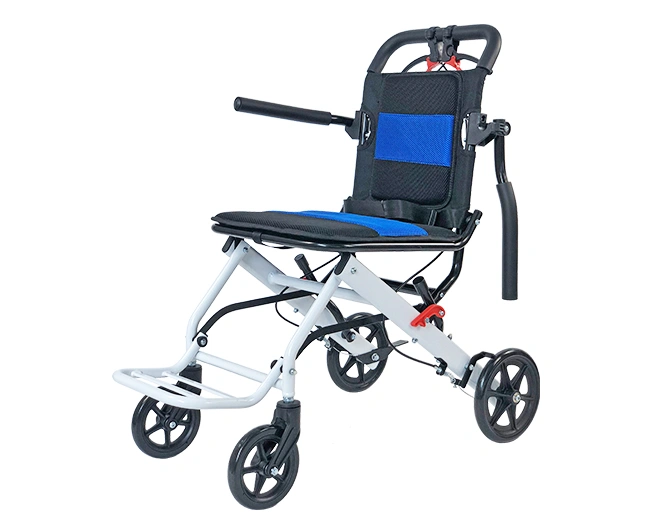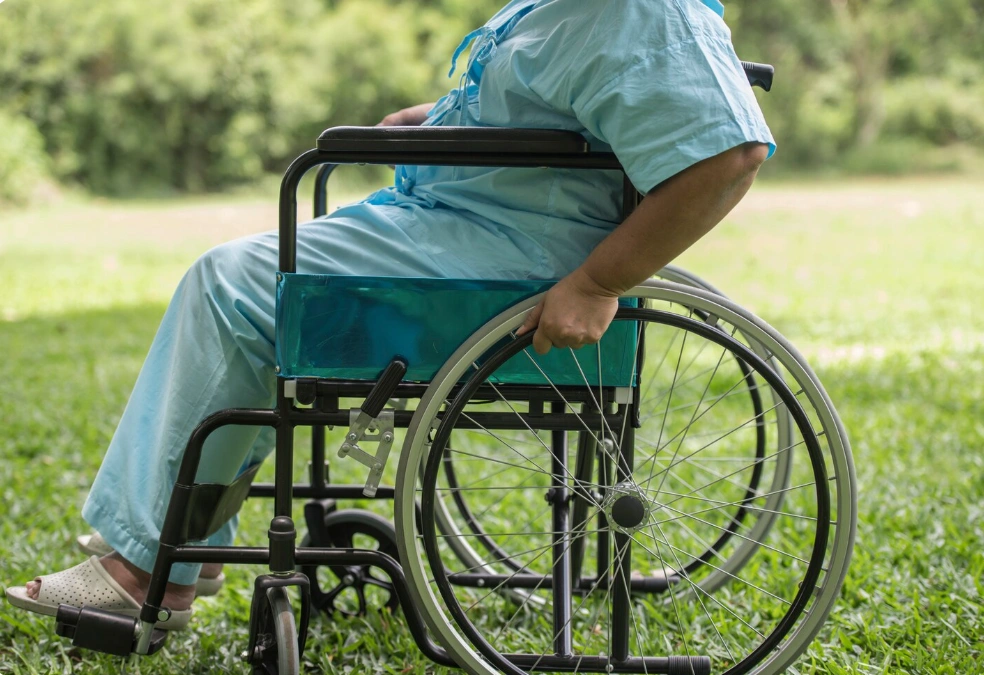What Safety Features Should an Automated Wheelchair Include for Daily Use
Time : Nov 05, 2025 View : 458
Automated wheelchairs have greatly boosted freedom and self-reliance for people with limited body strength. As these tools grow smarter, making sure their safety parts fit everyday needs stays very important. This piece looks at the main safety pieces to think about when picking an automated wheelchair. It helps users and helpers choose wisely.

Core Safety Features for Daily Use
Today’s automated wheelchairs mix clever safety setups. These parts team up to keep users safe during normal tasks. They form the base of trusty movement help tech.
Collision Avoidance Systems
Sensors spot hurdles right away to stop crashes. They use strong surroundings watch tools for full spotting power in all kinds of settings. LiDAR, ultrasonic, or infrared tech boost this watch. They give wide checks in different lights and weather. Auto brakes kick in when risks show up. They act fast without the user doing anything.
Stability and Anti-Tip Mechanisms
Anti-tip wheels give extra hold on slopes and bumpy ground. They stop risky back flips that might cause drops or hurts. Gyro tools keep balance in quick turns or fast halts. They check the wheelchair spot all the time and make tiny fixes. A low middle weight spot adds steady feel. It comes from smart weight spread and part places in the frame.
Secure Braking Systems
Electric magnets lock stops right when needed. They give sure slow-down on any ground or in rain. Hand switches act as backups if tech fails. Users or helpers can take over then. Lock brakes stop extra moves when still. They hold the wheelchair firm for switches or long waits.
Seatbelt and Restraint Options
Changeable belts keep users fixed in place while moving. They fit various body shapes and cozy likes. Soft straps give more help for those with weak upper body hold. They spread push evenly to avoid ache in long sits. Fast let-go parts make removal simple in quick needs. Safety ties never block escape in hurry times.
Lighting and Visibility Enhancements
LED front lights brighten dark spots. They light the way ahead for safe trips at night or in dim rooms. Back shiny parts and blink lights tell walkers and cars about the wheelchair. This matters near roads or busy spots. Sound warnings let others know it’s there. Users can pick tones to match the place.
User-Friendly Control and Monitoring Systems
Smart control screens make automated wheelchairs easy for all skill levels. They also give watch tools for better safety.
Intuitive Interface Design
Touch pads or stick controls make steering simple. They show clear choices for running the wheelchair. Set-up options let users tweak for their wants. They can pick speed caps, turn feel, and brake styles. These fit personal move needs and cozy levels.
Remote Monitoring Capabilities
Helpers can follow wheelchair spots with GPS links. This gives calm to families and care workers. They track safety and move habits. Warnings ping helpers about odd actions or urgent needs. They come through phone apps or special tools. This leads to quick help when required.
Battery Safety and Power Management
Steady power setups are key for automated wheelchair safety. They need full guards and extra plans to dodge power troubles.
Battery Protection Features
Over-fill guards stop battery harm and too much heat. Smart charge watches check power and warmth during fill-ups. Heat feelers watch battery state live. They tweak fill speeds and warn early about issues. This stops big safety risks.
Power Backup Solutions
Two-battery setups keep things going if one quits. This backup stops users from getting stuck. Hand push choices work when power drops. Users can still move to safe spots or get help.

Comfort Meets Safety: Ergonomic Design Considerations
Safety and cozy mix in good automated wheelchairs. Body-fit parts add to user guard and happy feel.
Adjustable Seating and Support Systems
Soft seats cut sore spots in long use. They spread weight well and back different body parts. Tilt backs and leg holds boost cozy without hurting safety. Users change spots but stay secure and weight even.
Customizable Fit for Individual Needs
Changeable arm holds, foot rests, and seat levels fit varied bodies. Each user gets right spot for cozy and safety. This cuts body stress. It stops extra hurts from bad fit gear.
Xunyu Medical: Ein zuverlässiger Anbieter von Mobilitätshilfen
Xunyu Medizinische works to build tools that simplify daily moves and keep them safe. They take a full view on move help. They focus on user freedom and good health. The firm mostly makes helper items for older folks. These include Krücken, walkers, shower chairs, bedside commodes, toilet armrests, bedside handrails, toilet risers, and more. This shows their skill in all move fixes.
From the start, the company sticks to new tech as the heart. They keep bettering plans and roles of items. This makes them match real wants of older people. With big focus on safety, strength, and body-fit plans, Xunyu Medical gives fixes that back freedom. They put user good health first.

Schlussfolgerung
To wrap up, an automated wheelchair for daily tasks must blend strong crash stops, steady tools, sure brakes, ties, light boosts, easy controls, far watch, and trusty power care. This gives full safety but keeps freedom. These parts join with body tweaks for cozy and fit. They turn risks into smooth moves. By picking such new ideas, users and helpers can trust automated wheelchairs. They become steady pals in daily life. For those wanting top picks based on safety and user focus, checking trusty sellers like Xunyu Medical gives a good begin. It leads to better health and self-rule.
Häufig gestellte Fragen
Q1: Can automated wheelchairs be used outdoors safely?
A: Yes, lots of automated wheelchairs come with all-ground wheels. They have weather-proof parts and light setups. These help safe trips outside. Users keep moving in varied weather. Safety and trust stay strong.
Q2: What happens if the battery runs out while using the wheelchair?
A: Good models have battery lights to warn early. Some give hand push or two-battery backups. Standard: 6AH lithium battery for 6-10 km; optional 10AH lithium battery for 10-15 km high; optional 20AH lithium battery for 15-25 km. These give choices for daily move wants.
Q3: Are collision avoidance sensors reliable in crowded environments?
A: Top models use many sensor groups like LiDAR plus cameras. They spot exactly in tight or busy spots. Think malls or walkways. The systems watch around all the time. They tell apart obstacle kinds. This gives trusty guard in hard setups.


